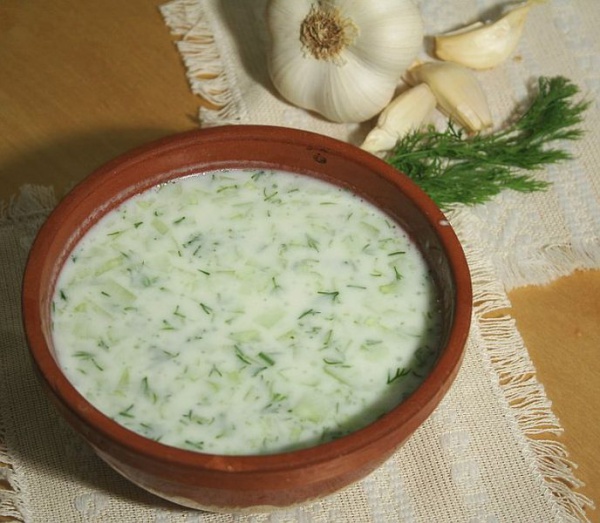Facts About Tarator
Tzatziki, also known as cacık or tarator, is a delicious and versatile dish that's popular in Southeast European and Middle Eastern cuisines. It is made from a blend of salted strained yogurt or diluted yogurt, cucumbers, garlic, salt, olive oil, vinegar or lemon juice, and herbs like dill, mint, parsley, and thyme. Typically served cold, tzatziki is a favorite as a dip, soup, or sauce, perfect for appetizers or side dishes.
The story of tarator dates back to the medieval Ottoman Empire, where it originally referred to a dish made of ground walnuts and vinegar. Over the years, different regions have put their own spin on tarator, incorporating ingredients like tahini in the Levant and yogurt and cucumbers in Turkey and the Balkans. Today, it remains a staple in many meze spreads.
The word "tzatziki" comes from Modern Greek, borrowed from the Turkish word "cacık." The origins of "cacık" are a bit unclear but may be linked to Armenian, Turkish, or Kurdish roots. Meanwhile, "tarator" is believed to have Slavic origins, particularly from Bulgaria.
Tzatziki has many regional variations. In Greece, it's often served as a meze with bread or fried vegetables and can include unique ingredients like cattails or purslane. Turkish cacık might feature different combinations of fresh vegetables and herbs, such as shredded carrots or leafy greens. In the Balkans, tarator is commonly enjoyed as a cold soup, made with yogurt, cucumber, garlic, walnuts, dill, and sometimes lettuce or carrots.
In Cyprus, a similar dish called talattouri is served as a dipping sauce. In Iraq and Iran, variations like jajeek and mast o khiar are popular meze options. Other related dishes include ovdukh from the Caucasus mountains, mizeria from Poland, and raita from South Asia.

 United Kingdom
United Kingdom